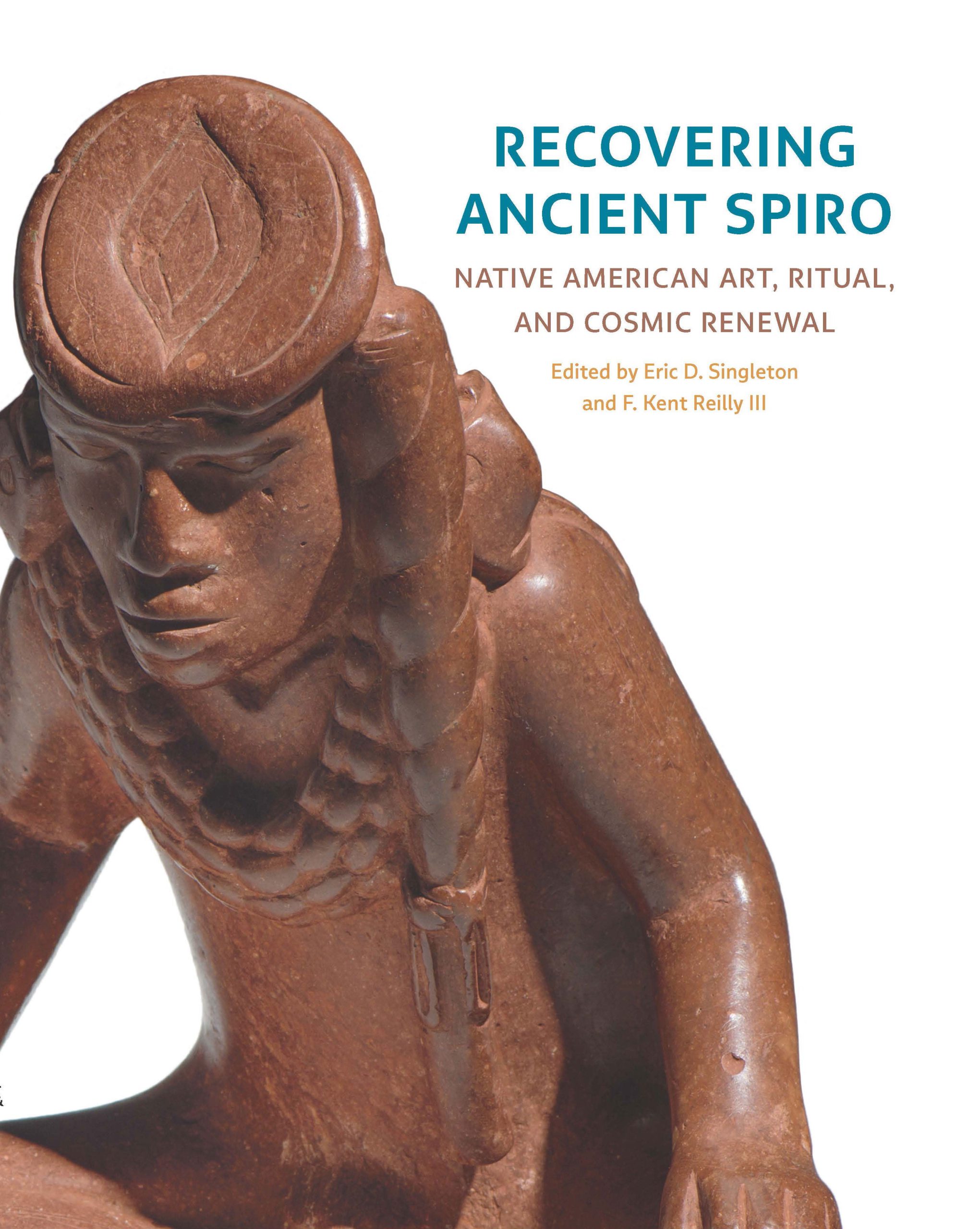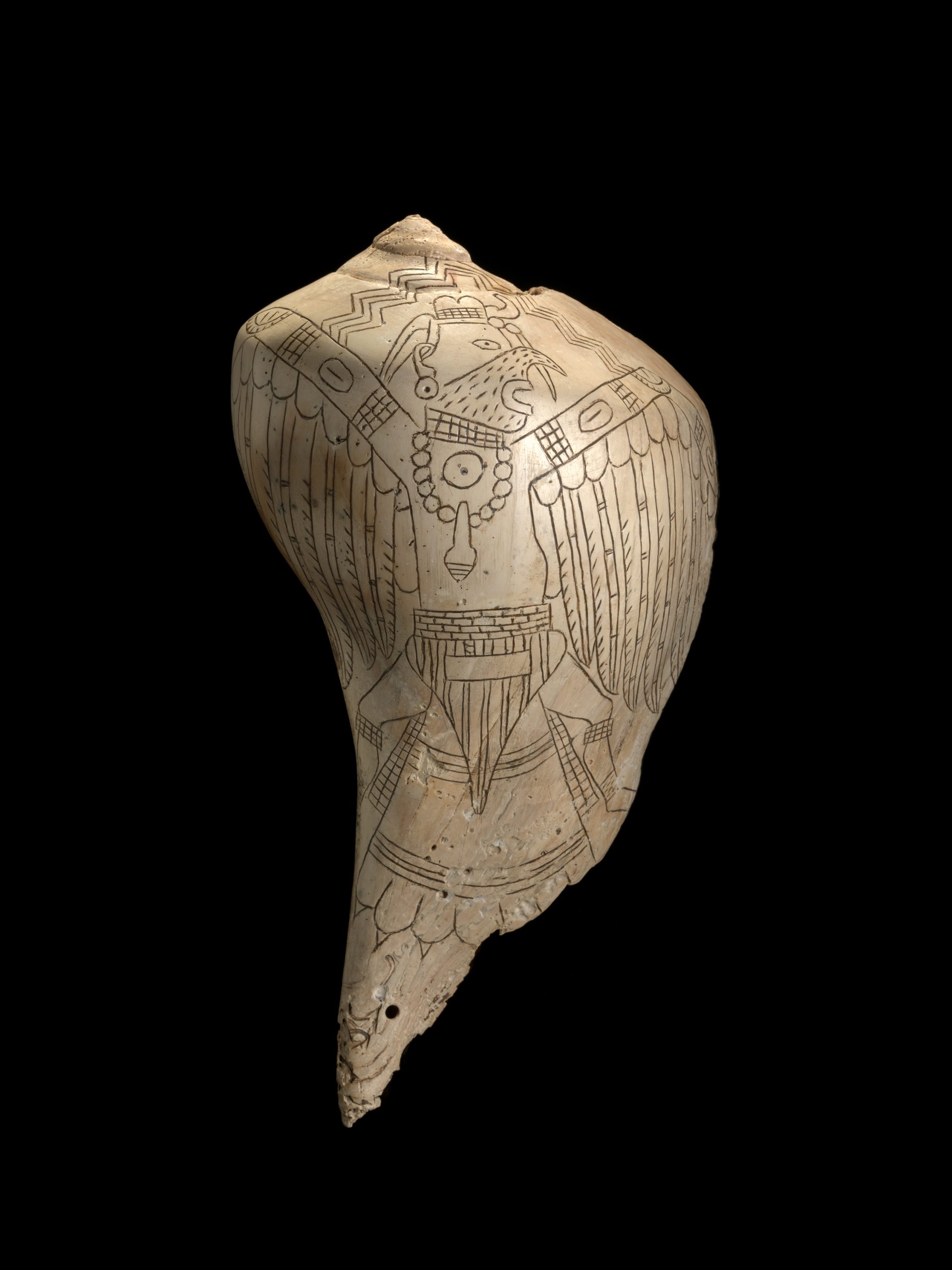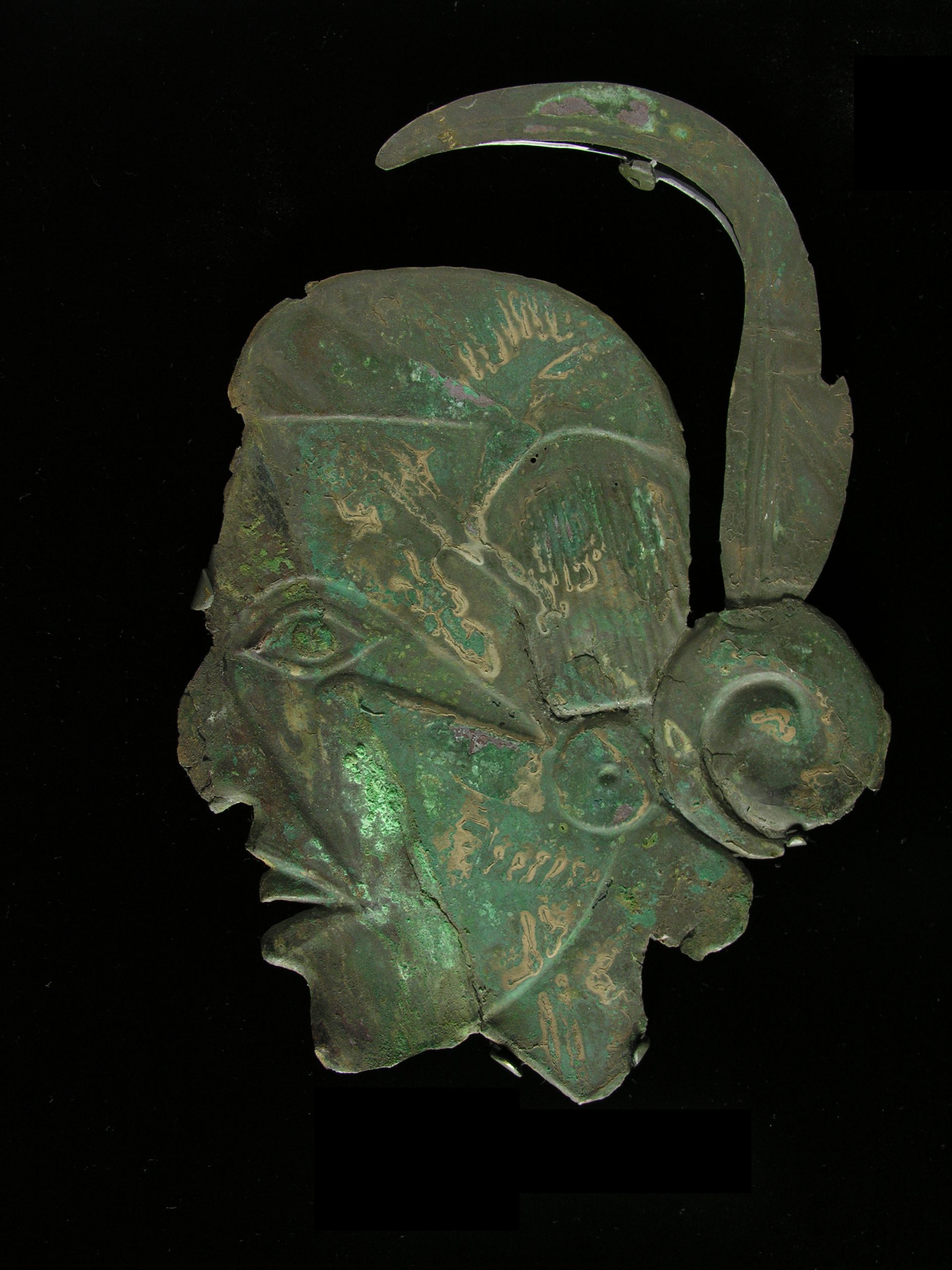Indianz.Com > News > People’s World: Tribal site continues to inspire and educate
‘Recovering Ancient Spiro’: Remembering one of Native America’s most forgotten but important sites
Thursday, April 14, 2022
People's World
Stunning and staggering is the recent book Recovering Ancient Spiro: Native American Art, Ritual, and Cosmic Renewal. To begin with, this review is directed at all Americans in general, but to all Native Americans in particular, because Spiro and other ancient sites are mostly unknown. This volume of art and essays covers not only the magnificent Spiro site in Oklahoma; it also provides invaluable thought-provoking insights into the glorious, but little known, history of the great civilizations of ancient Indigenous Eastern North America, civilizations now touted as equal to those of the Aztecs and Mayas.
Spiro, located in southeastern Oklahoma on the Arkansas River, to this day holds the distinction of being the only known ancient site in North America where thousands upon thousands of extraordinary artifacts and ritual objects from across the Mississippian world, and beyond, have been found. They were amassed in a hollow chamber named the Spirit Lodge, approximately 16 feet wide and 16 feet high inside a major earthwork. Some of the items were from as faraway as California and the Valley of Mexico.
These ancient civilizations were, for their time, among the greatest and most brilliant in the entire world. There were millions upon millions of Indigenous inhabitants of these ancient polities. Their civilizations were very advanced but are now largely forgotten.
These cultures, which flourished from 800-1600 C.E., are called Mississippian because some of their first cities and mounds were found along the Mississippi River and in the Mississippi River Valley. Each of these cities, having several thousand to hundreds of thousands of inhabitants, had their own surrounding communities, “suburbs,” and political structures. These cosmopolitan metropolises were typically larger than were places like London or Paris at the same time. This was a continental area that was a paradise, a veritable Eden. The earth was bountiful, there was no disease, the populations were well fed, and warfare was largely preempted by extensive trading activities.
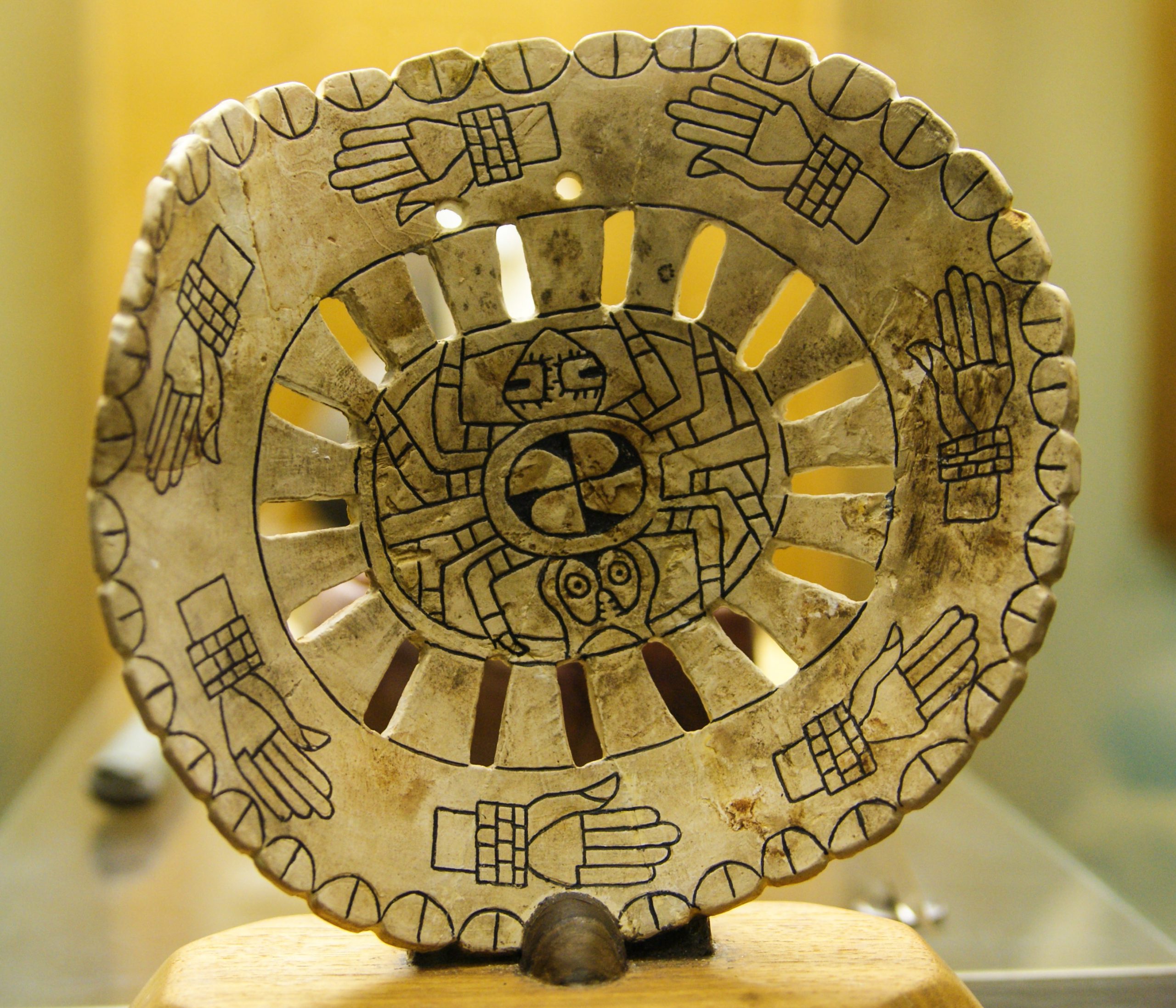

An abundance of great cities
Great cities abounded in the ancient Native America, with cities spread across the eastern half of North America, in the Midwest, and throughout the Southeast. Their inhabitants shared a overlapping political and religious ideologies. The two great foundations of the Mississippian civilizations were generosity and bravery. It is now speculatively thought that these great civilizations were not the work of just one people, but of a combination of tribal peoples working together.
Still, most Mississippian cities had their own distinct features. Spiro stands out as being a kind of ceremonial center that suggests religious pilgrimages and prodigious trading contacts being made periodically, judging by the staggering number of artifacts from all over North America found there.
When the European explorers first landed on the shores of North America, they had no idea of what they would encounter. The unique cultures they confronted were mostly unlike any previously seen. Yet, only a very few saw the grandeur of the once great cities. Mostly they gazed upon the earthen ruins of the once populous urban centers. Just imagine how history could have been so markedly different, how the landscape would have looked so stunningly distinct with great cities in every direction surrounded by veritable suburbs composed of innumerable towns, villages, hamlets, and farmsteads. Vast ceremonial complexes covered the eastern half of the continent from the Great Lakes to the Gulf of Mexico and from the Atlantic Coast to the edge of the Great Plains, which is where we find ancient Spiro.
But before proceeding further to discuss Spiro, there is a bit more to be said about the ancient cultures represented by that brilliant civilization. The Mississippian civilizations were urban centers composed of huge numbers of mounds attesting to the existence of large populations. These centers often had as many as a hundred of these earthworks, with numerous expansive plazas and massive temples.
One of the few European invaders who saw these Mississippian cities was Hernando de Soto. Pillaging through the Southeast in 1539-40, his expedition documented the polities they marched across in their rapacious, piratical search for gold and plunder. The largest of these sovereigns was named Coosa. The expedition marched for six days through numerous towns and villages for hundreds of miles before reaching that capital city. This Indigenous polity covered the area from Eastern Tennessee through Northwest Georgia to Central Alabama. Another large city encountered named Talemoco is described as having an enormous temple at its center. At the doors of the temple were 12 giant figures carved of wood. De Soto said, “Had they been in the most famous temples of Rome…they would have been esteemed for their grandeur and perfection.”
Such descriptions were representative of Mississippian life a thousand years ago. If only the great polities had been flourishing when the invasion began in earnest.
Ancient Spiro
Spiro today is a small town located in LeFlore County, Oklahoma, on the Arkansas River and about 15 miles from the city of Fort Smith, Arkansas. But as pointed out in the book, it is one of the country’s most important but little known ancient cultural and religious centers. The Spiro Mounds site is composed of 12 mounds, and was likely the ancient home of several thousand inhabitants. Physically it might not appear as significant as other Mississippian sites, such as the much-celebrated Cahokia, Moundville, Etowah, and others, but what makes it stand out is that it contained the largest assembly of engraved, embossed, and carved artifacts of any known Mississippian city in North America. In fact, 90% of all known engraved shell and ritual objects are from the single Spiro site.
According to the editors Singleton and Reilly:
“The remarkable objects found at Spiro were produced by the ancestors of Caddo, Wichita, Pawnee, Osage, Lakota, Chickasaw, Cherokee, Muscogee, and countless other Native communities. We know this because of our understanding of the symbols that were engraved, embossed, or painted on each item. These representations correspond to archaeological and ethnographic records as well as contemporary Native American folkloric traditions, such as the Hero Twins narrative, the stories and drawings of Thunderbirds, and the saga of Morning Star and Spider Woman.”
There is well-founded speculation that since the items came from a diversity of peoples speaking a diversity of languages, there was sustained contact between the different peoples and huge populations for hundreds of years.
The editors also note that before the introduction of European pathogens, the existence of large fortified and non-fortified cities and towns was widespread and that well organized military expeditions were not uncommon. This also suggests that many of these urban centers functioned as city-states. But, given the amount of items exchanged between the diversity of peoples, this suggests that there was far more trading than warfare among the different political entities.
But what is of paramount importance is the recognition that these great cities, filled with millions of inhabitants, existed hundreds of years before the advent of Europeans. They were the manifestation of brilliant, very advanced civilizations. Again, this should be a staggering revelation for mainstream society.
Lots of feelings as I got a preview of this exhibit at the Dallas Museum of Art. I didn't know what to expect as all I've ever known was that Spiro had been looted in the 1930s. pic.twitter.com/X1Qw4pJ2Av
— Jodi Voice Yellowfish (@JodiVoice) March 10, 2022
Spiro plundered in 20th century
The magnificent site suffered the effects of ruthless plunder by looting treasure hunters in the 1930s. These pillagers were enamored with get-rich-quick schemes based on selling priceless artifacts to collectors. In 1933, looters were the first to dig at the site. They sold or destroyed countless artifacts in one of the largest and longest episodes of looting in North America. Unknown numbers of items were lost to collectors, never to be recovered.
In 1935, legislation was passed protecting Spiro. Archaeological excavation began soon after. The Spiro artifacts were found to be unmatched in modern times. It was concluded that the Spiro people had created a civilization equal to that of the Aztec or Maya. At that time, the assemblage grabbed the world and became the focus of considerable public and scholarly attention. It was announced that the Spiro Mounds were the greatest source of artifacts ever found to date.
The editors decry the looting, saying:
“This site remains the location of one of the largest and longest episodes of looting at any archaeological site in history. First identified in 1914 by Joseph Thoburn, a professor at the University of Oklahoma, the mounds were part of the Choctaw Nation land allotment. Divided into at least four allotment partitions, the Spiro site was dispersed to Choctaw freedmen. At this time, the owners forbade all digging on the property…
“By 1933, however, this restriction was reversed. Needing money, the owners now leased the land to a group of commercial diggers calling themselves the Pocola Mining Company (PMC). Having no respect for the site or the Caddoan people who created it, they dug with reckless abandon.”
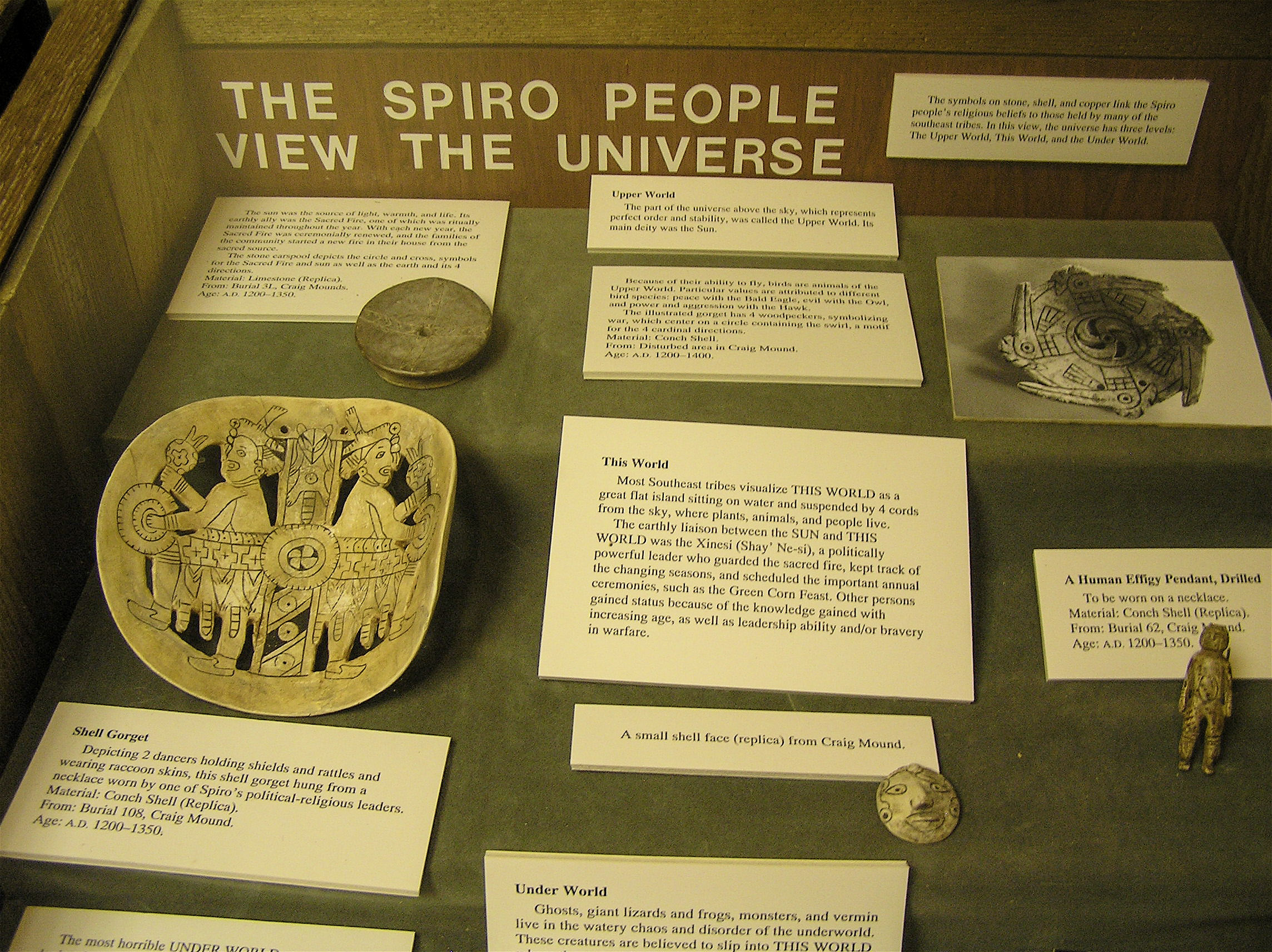
Albert Bender is a Cherokee activist, historian, political columnist, and freelance reporter for Native and Non-Native publications. He is currently writing a legal treatise on Native American sovereignty and working on a book on the war crimes committed by the U.S. against the Maya people in the Guatemalan civil war He is a consulting attorney on Indigenous sovereignty, land restoration, and Indian Child Welfare Act (ICWA) issues and a former staff attorney with Legal Services of Eastern Oklahoma (LSEO) in Muskogee, Oklahoma.
This article originally appeared on People's World. It is published under a Creative Commons license.
Search
Filed Under
Tags
More Headlines
Cronkite News: President Trump targets Smithsonian in another anti-DEI effort
Native America Calling: Counteracting a pollinator crisis
Cronkite News: Arizona State University hosts annual powwow
Chickasaw Nation citizen T.W. Shannon joins Department of Agriculture
NAFOA: 5 Things You Need to Know this Week (April 14, 2025)
Bryan Warner: Cherokee Nation invests in food sovereignty
Native America Calling: Tribal libraries, museums, low-income heating and food sovereignty on the chopping block
Native America Calling: Contemporary Pueblo architects reclaim ancestral knowledge
Native America Calling: Flexing tribal strength during turbulent times
National Indian Health Board names permanent chief executive amid major change
Native America Calling: Medicaid, Medicare, health care, and food safety on the line
Montana Free Press: Blackfeet Nation citizens cite treaty rights in lawsuit over tariffs
Cronkite News: A ‘mural with a message’ rises in Arizona
Chuck Hoskin: Cherokee Nation is an economic powerhouse
Native America Calling: Philanthropy fills in the gaps
More Headlines
Native America Calling: Counteracting a pollinator crisis
Cronkite News: Arizona State University hosts annual powwow
Chickasaw Nation citizen T.W. Shannon joins Department of Agriculture
NAFOA: 5 Things You Need to Know this Week (April 14, 2025)
Bryan Warner: Cherokee Nation invests in food sovereignty
Native America Calling: Tribal libraries, museums, low-income heating and food sovereignty on the chopping block
Native America Calling: Contemporary Pueblo architects reclaim ancestral knowledge
Native America Calling: Flexing tribal strength during turbulent times
National Indian Health Board names permanent chief executive amid major change
Native America Calling: Medicaid, Medicare, health care, and food safety on the line
Montana Free Press: Blackfeet Nation citizens cite treaty rights in lawsuit over tariffs
Cronkite News: A ‘mural with a message’ rises in Arizona
Chuck Hoskin: Cherokee Nation is an economic powerhouse
Native America Calling: Philanthropy fills in the gaps
More Headlines
